operating systems
1/63
Earn XP
Description and Tags
here we have graphs , codes then definitions of all final part of this course
Name | Mastery | Learn | Test | Matching | Spaced |
|---|
No study sessions yet.
64 Terms
Base and Limit Registers
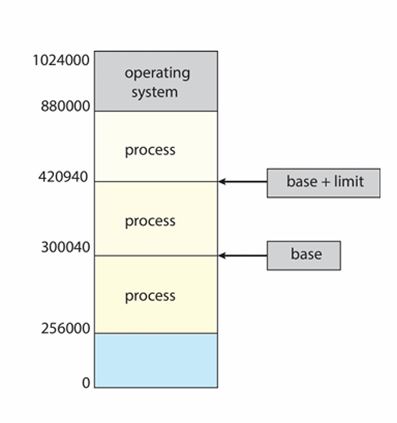
Multistep Processing of a User Program
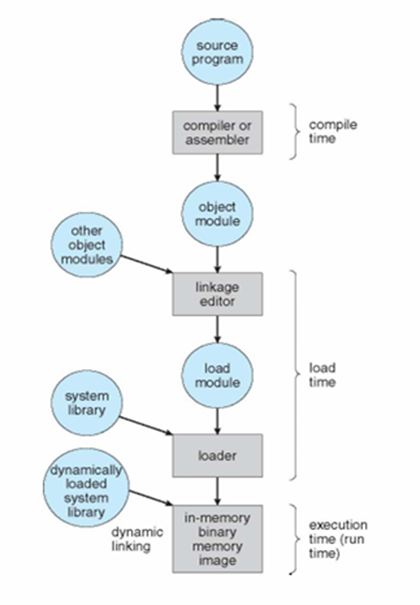
paging hardware
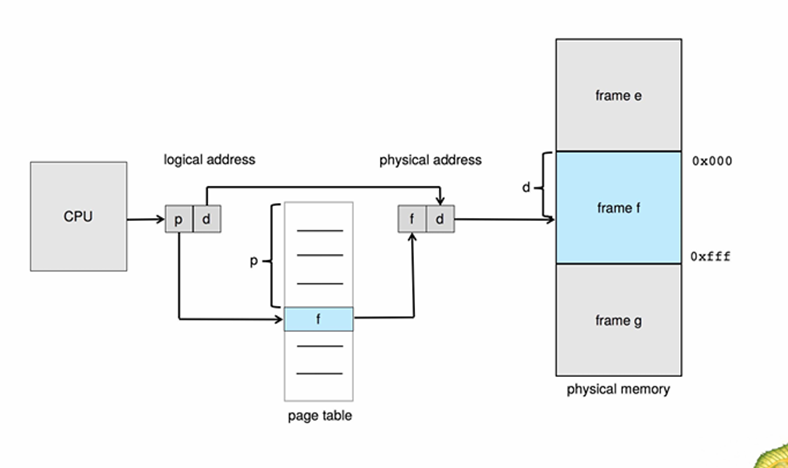
Hierarchical Page Tables
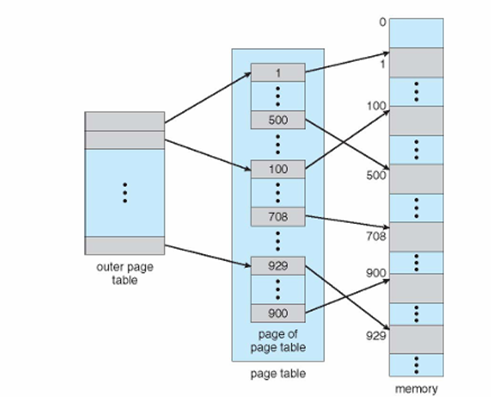
Address-Translation Scheme
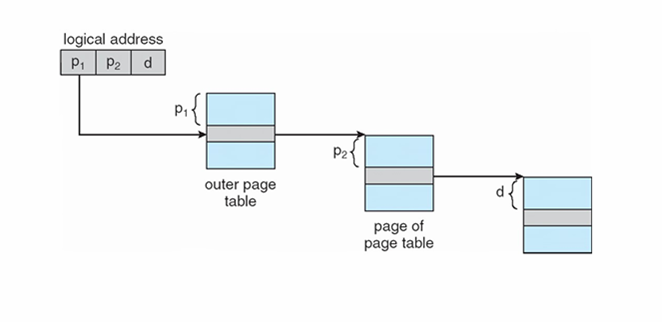
Three-level Paging Scheme
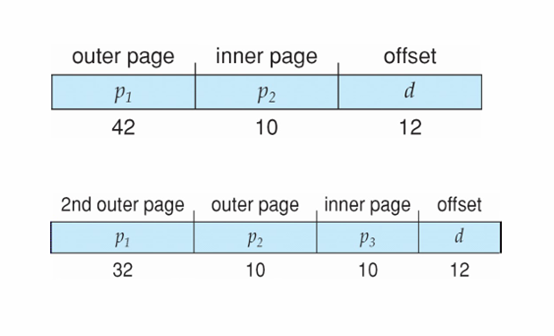
Hashed Page Table
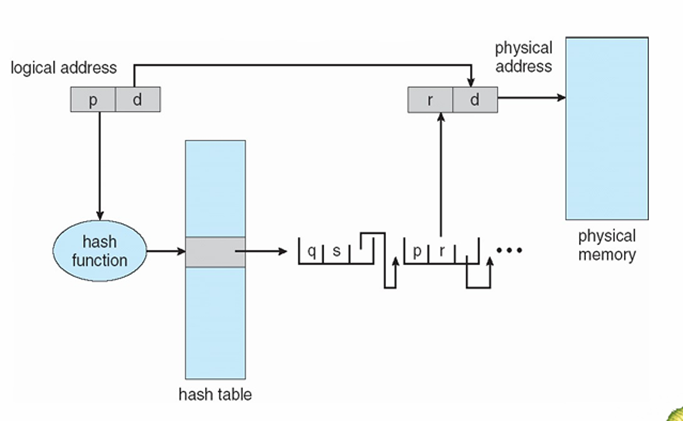
Inverted Page Table Architecture

Schematic View of Swapping

Base register
holds the smallest legal physical memory address
Limit register
specifies the size of the range.
Logical address space
is the set of all logical addresses generated by a program
Physical address space
is the set of all physical addresses generated by a program
relocation register
Base Register used at execution time to perform logical-to-physical address translation.
dynamic loading
a technique where a routine is not loaded into memory until it is called during execution.
Static linking
system libraries and program code combined by the loader into the binary program image
Dynamic linking
linking postponed until execution time
Hole
block of available memory; holes of various size are scattered throughout memory (are gaps of unused memory between partitions.)
External Fragmentation
total memory space exists to satisfy a request, but it is not contiguous
Internal Fragmentation
allocated memory may be slightly larger than requested memory; this size difference is memory internal to a partition, but not being used
Paging
memory-management scheme that allow the physical address space of a process to be non-contiguous (logical memory chucnks)
frames
Divide physical memory into fixed-sized blocks (physical memory chunks)
page table
data structure used by the operating system to map logical pages to physical memory frames.
used to translate logical addresses to physical addresses in a paging memory system.
Page-table base register (PTBR)
points to the page table
Page-table length register (PTLR)
indicates size of the page table
swapped
process can be swapped temporarily out of memory to a backing store, and then brought back into memory for continued execution
Ready Queue
the list of all processes that are ready to run and are waiting for CPU time.
deadlock graph
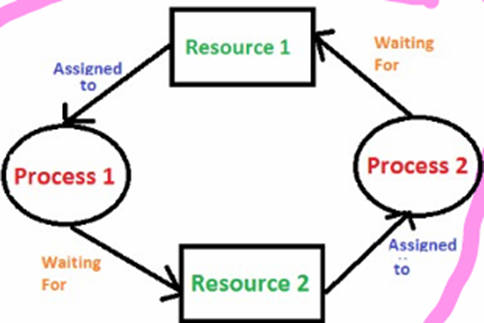
Deadlock
situation where a set of processes are block because each process is holding resource and waiting for another resource that is acquired by some other process.
E is partitioned into two types
• request edge – directed edge Pi > Rj
• assignment edge – directed edge Rj > Pi
Resource-Allocation Graph
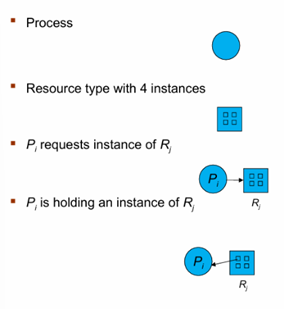
Mutual Exclusion
not required for sharable resources (e.g., read-only files); must hold for non-sharable resources
Hold and Wait
must guarantee that whenever a process requests a resource, it does not hold any other resources
Circular Wait
Impose a total ordering of all resource types, and require that each process requests resources in an increasing order of enumeration
A safe state
when the system can guarantee that all processes can finish eventually — one at a time — without causing a deadlock.
claim edge
Process might ask for this resource late
Rollback
return to some safe state, restart process from that state
Starvation
same process may always be picked as victim, process will never finish its designated tasks (most common solution is to include the number of rollbacks in the cost factor)
Cooperating process
one that affect or be affected by other processes executing in the system.
Race condition
when two or more processes try to use or change shared data at the same time, and the final result depends on which one finishes first, which can lead to unexpected or incorrect results
Critical section problem
is to design a protocol that the processes can use to synchronize their activity so as to cooperatively share data.
requirements for solution to critical-section problem
1- Mutual exclusion
2- Progress
3- Bounded waiting
Peterson’s solution
is restricted to two processes that alternate execution between their critical sections and remainder sections
The compare_and_swap Properties
• Executed atomically
• Returns the original value of passed parameter value
• Set the variable value the value of the passed parameter new_value but only if *value == expected is true. That is, the swap takes place only under this condition
block
place the process invoking the operation on the appropriate waiting queue
wakeup
remove one of processes in the waiting queue and place it in the ready queue
monitors
A high-level abstraction that provides a convenient and effective mechanism for process synchronization.
Condition Variables graph
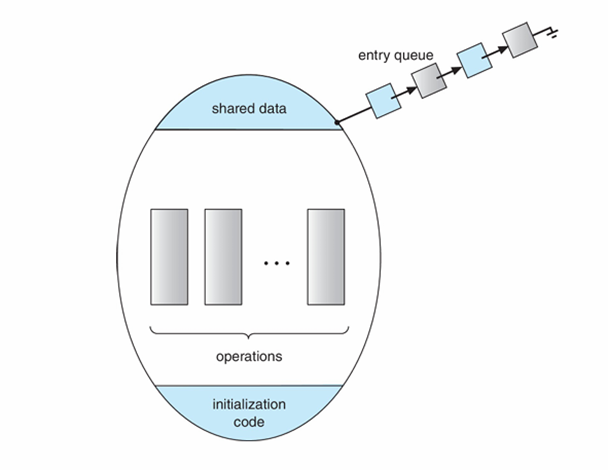
livness
set of properties that a system must satisfy to ensure processes make progress.
Starvation
indefinite blocking, A process may never be removed from the semaphore queue in which it is suspended
Priority Inversion
Scheduling problem when lower-priority process holds a lock needed by higher-priority process
condition construct
used inside monitors to allow a process to wait (pause) and later be signaled (resumed) by another process.
Virtual memory
separation of user logical memory from physical memory
Virtual address space
logical view of how process is stored in memory
Virtual Memory That is Larger Than Physical Memory graph
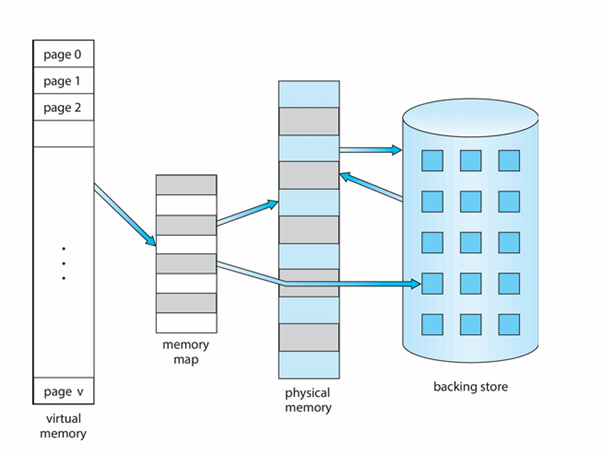
Demand paging
Could bring entire process into memory at load time OR bring a page into memory only when it is needed.
Lazy swapper
never swaps a page into memory unless page will be needed
Demand paging graph
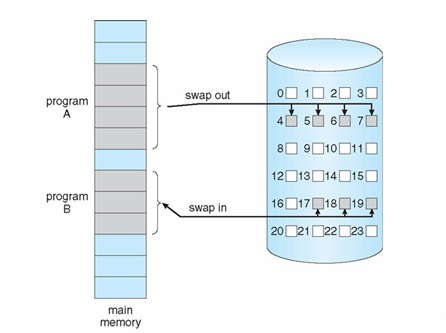
page fault
During MMU address translation, if valid–invalid bit in page table entry is i
Page replacement
find some page in memory, but not really in use, page it out
Over-allocation
giving out more memory than what’s available, which causes performance problems like thrashing
modify (dirty) bit
shows if a page has been changed .
if not, it doesn’t need to be saved to disk when replaced.
Page Replacement graph
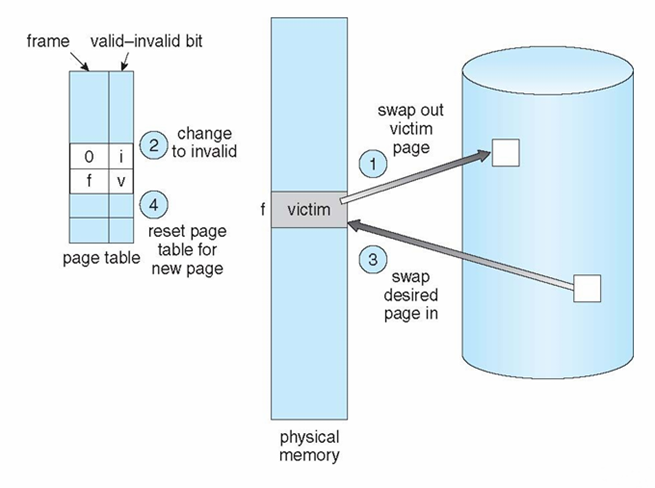
Thrashing
A process is busy swapping pages in and out. In other words, a process is thrashing if it is spending more time paging than executing